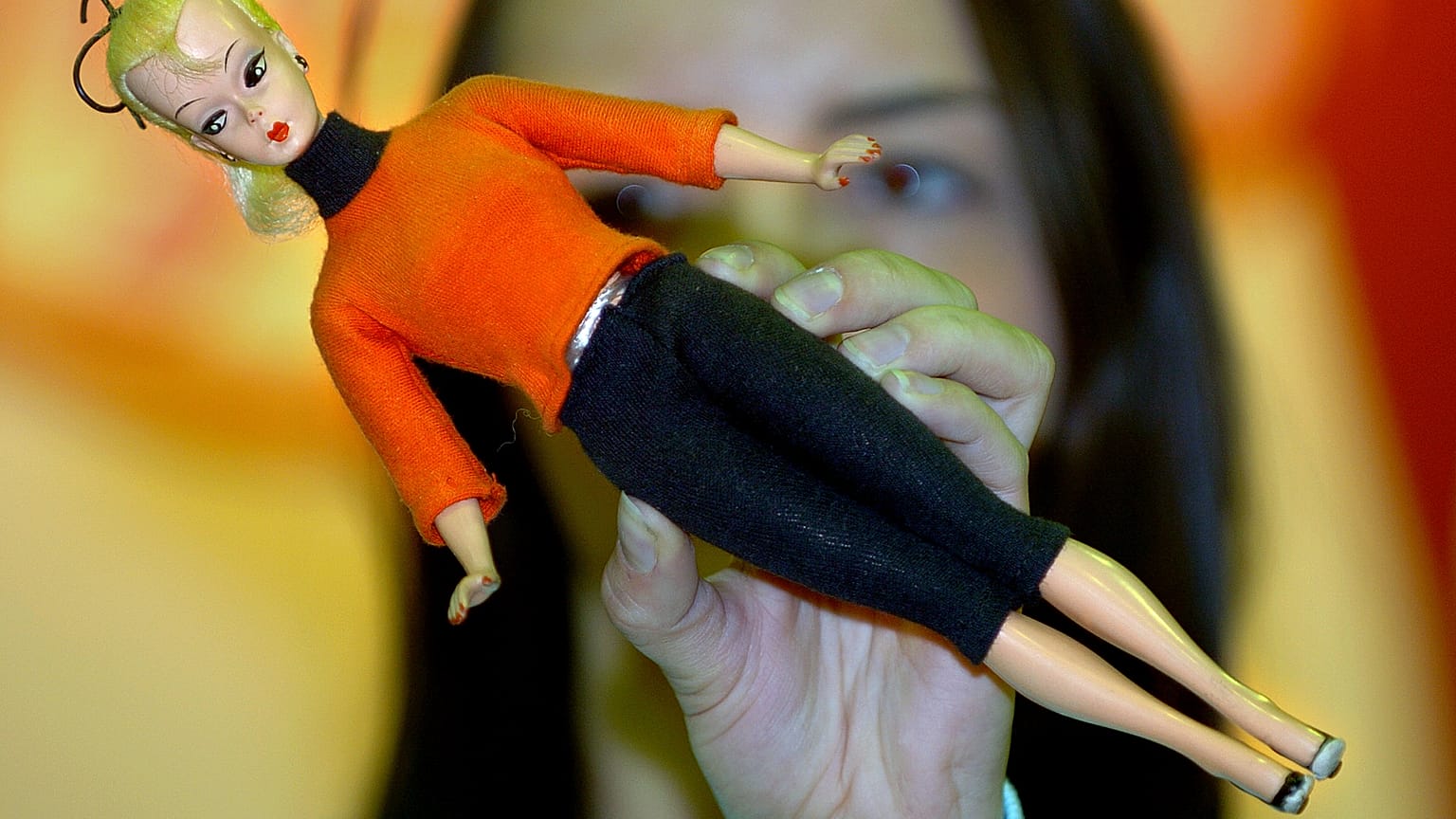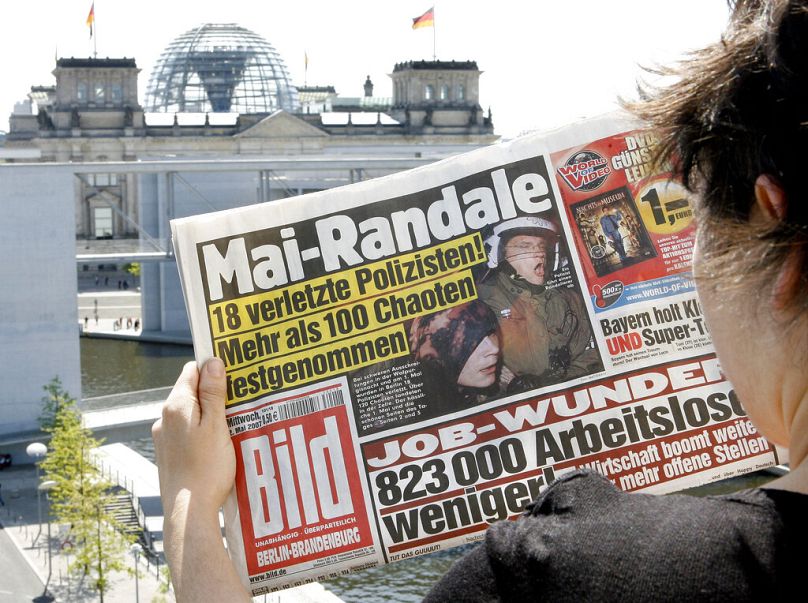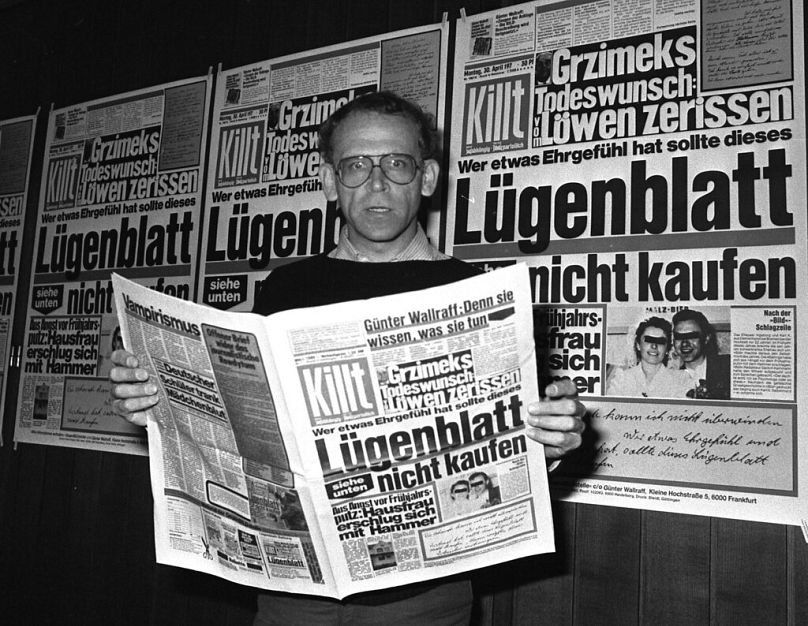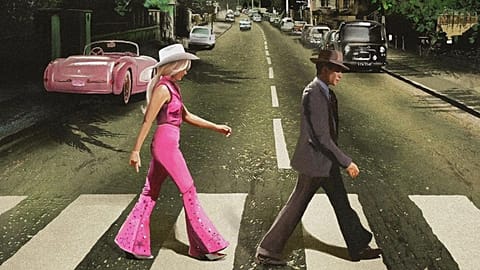The Lilli doll, created by the Bild tabloid, went from a spur-of-the-moment cartoon to a gag gift for adults in Germany before being seen as an inspiration for young women in the US.
The Bild tabloid was about to launch its first edition in June of 1952 and there was room in the paper that urgently had to be filled before it went to print.
Cartoonist Reinhard Beuthien was rushed to come up with a placeholder, and he sat down and drew a curvaceous, sexy young woman with a high blonde ponytail sitting across from a fortune-teller.
“Could you tell me the name and address of a tall, handsome and rich man?” she asks. At the top of the drawing, the cartoonist wrote the name Lilli.
This is how Barbie was born – or at least the Bild-Lilli cartoon, meant to reflect the tabloid’s “irreverent, unconventional nature,” the stated goal of the conservative publisher who intended it to be a counterweight to more serious political publications in the country.
While the contemporary Barbie doll – especially in the marketing campaign around the launch of the new Barbie movie directed by Greta Gerwig and starring Margot Robbie and Ryan Gosling – is touted as a feminist icon, her inspiration was intended as newspaper filler when German publishing house Axel Springer launched what was to become its most controversial newspaper yet.
Today, Bild is well-known in German-speaking countries for its scandalous and incendiary content, and has received more reprimands by the German Press Council than any other publication.
‘Curves instead of bombs’
The Lilli cartoon continued to appear in Bild, and while the comic is described as “cheeky” in the official archives of Axel Springer, most feminists would consider her to promote the stereotype of the vapid, superficial and overly-sexualised blonde woman.
In another iteration, Lilli comes to the office in a bathing suit. The caption reads “So dumb! When I wake up in the morning, I keep thinking I’m still on holiday.”
Bild-Lilli’s popularity grew so much that in 1955, the publisher commissioned toy factory O&M Hausser to produce a doll based on the drawing, which was sold in newsstands in a transparent plastic tube, with the same provocative outfits and a copy of Bild tucked into her pocket.
The toy company was previously known for mass-producing German imperial soldier figurines, and later, Wehrmacht soldiers as well as members of the Nazi SA and SS. In postwar Germany, model howitzers, tanks and barracks became less popular, so they then transitioned to producing iterations of cowboys and Native Americans.
Initially, the Lilli doll was bought as a joke, a three-dimensional iteration of the woman who said silly things in Bild, or as the Axel Springer archives describe it, “old man jokes”.
But when, along with the doll, around 150 different outfits ranging from fur coats to bathing suits were made, children got interested in playing with her too – especially since she had moveable arms and legs, unlike other dolls at the time.
A couple of years later, American businesswoman Ruth Handler, the daughter of Polish-Jewish immigrants, was on holiday in Switzerland and decided to buy the doll for her daughter Barbara.
Handler is the founder of Mattel, the company that produces Barbies to this day, after presenting her own version – albeit almost identical to the Lilli doll -- of the “teen age fashion model” at a toy fair in New York in 1959.
In 1964, Mattel bought the rights to the Bild-Lilli and production in Germany was discontinued.
‘Pushing Germany to the right’
There is a significant amount of scholarship and analysis dedicated to the corrosive effects of Bild on German society, and poking fun at Bild headlines – which include things like “Alien cult tries to clone Hitler” – is a common pastime, especially among progressives.
“There is a clear trend of Bild reporting, backed by academic research, that highlights how Bild actively criticises Germany’s multicultural reporting and narratives around refugees,” media and communications expert Nadia Zaboura said in the Süddeutsche Zeitung’s Quoted podcast in May.
Bild supporters claim the paper publishes stories that reflect the sentiments most people are too afraid to voice in public, or that the other publications in the country think they are too respectable to publish.
In 2004, a group of journalists established the Bild Blog, a website which monitors the reporting errors and misleading reporting the tabloid publishes. They currently get around 1 million views per month and employ full-time journalists.
Bild has not shied away from attacking the perceived left-wing bias in the mainstream German media scene, especially when it comes to issues such as refugees or Muslim communities.
It was widely detested among the German student protest and art scene in 1968, when students across the continent – ranging from France to communist Czechoslovakia – rallied against the official narratives of their governments.
Ironically, the Barbie movie – which includes trans actors among its cast and a plot throughout which the titular character tries to cast away the traditional views of femininity and the patriarchy – has been chastised by leading American right-wing commentators such as Ben Shapiro as being a tool to promote “wokeism” among children.
Bild is considered the most widely sold print product in Europe, and its owners, Axel Springer, also own Politico and its European subsidiary, Politico Europe, as well as Business Insider. Die Welt daily is their most well-known newspaper.




















